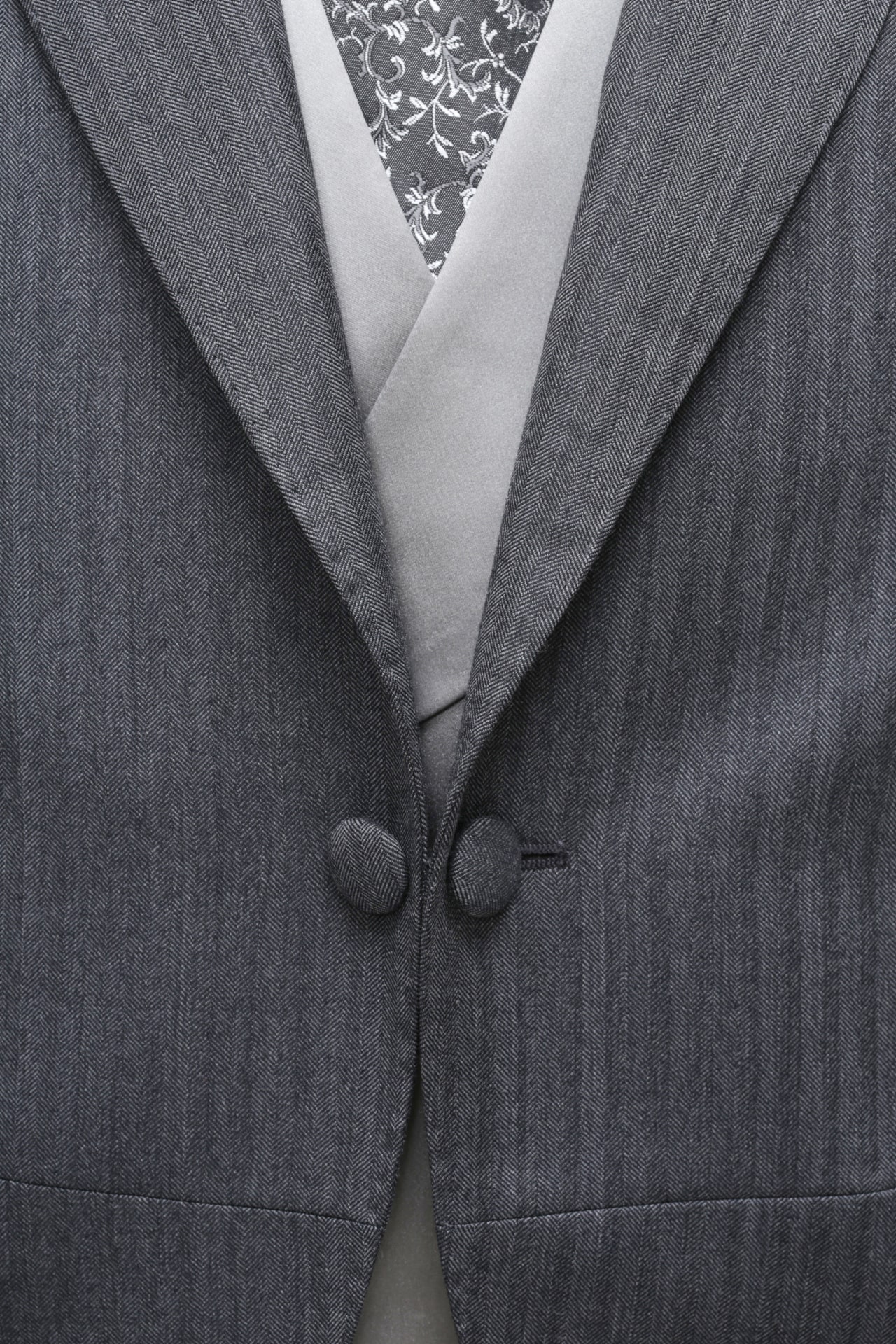
Share
The Morning Coat
We know it as a tailcoat, which derives from froc, a round-brimmed jacket that Charlie Chaplin wore very short, but it is in the English term morning coat that the garment finds all its meaning and attributes in the men’s wardrobe. Originating in the 19th century, it was first worn by members of the British aristocracy during daytime events, and the annual equestrian event at Ascot continues the tradition. The design of the morning coat is characterised by a distinctive cut: it is a one-button coat at the front that stretches to the back, forming a tail that splits in two, similar to a tailcoat, albeit shorter. It is usually made from lightweight fabrics such as wool or linen, ideal for warmer climates.
Traditionally, the basic morning coat is combined with striped trousers, a white shirt and a waistcoat, which can be in a variety of colours, such as grey or cream. The tie can be a bow tie or a long tie, depending on the formality of the event. This outfit is typically worn on formal occasions such as weddings, christenings and other daytime celebrations. But the pinnacle of the tailcoat lies in choosing distinctive colours and patterns such as the Prince of Wales, the pin stripe or the chalk stripe with a Winchester shirt (plain pale-coloured fabric with a small pattern or stripes with a white collar and cuffs), which a beautiful tie completes in apotheosis.
The morning coat also carries a symbolism of elegance and sophistication, being a popular choice among guests at more refined social events. Over the years, while fashion has evolved, the morning coat remains a timeless choice, reflecting nostalgia and respect for sartorial traditions and, in our country, increasingly being adopted as the “groom’s suit”.
Although the morning coat is less common at everyday events, it is seen at official ceremonies and special events, perpetuating its status as a male style icon. Thus, the morning coat continues to symbolise a degree of formality and refinement in elevated men’s dress.